Art Fairs
On the Heels of ArtBo, Bogotá Builds Momentum as an Art Capital—But Can It Last?
A shaky economy and political future test the local art market.
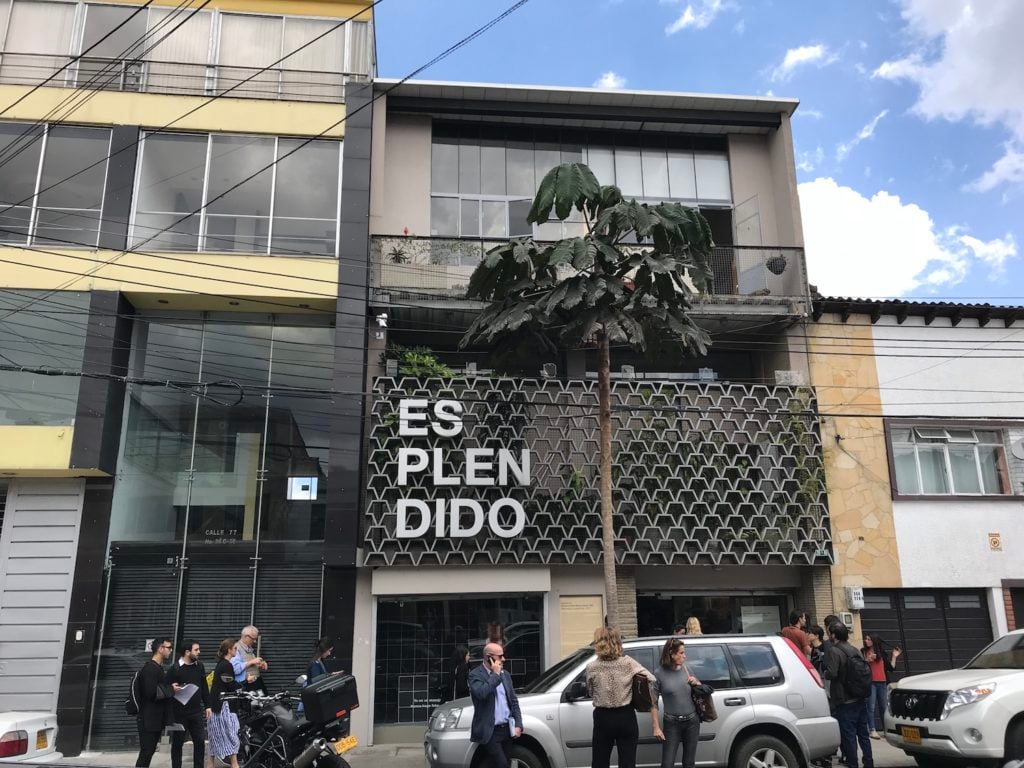
A shaky economy and political future test the local art market.

Lorena Muñoz-Alonso

The 13th edition of ArtBo took place at the end last of week in the Colombian capital of Bogotá. Gathering 76 galleries from 18 countries, this mid-sized fair—a project of the private nonprofit organization Cámara de Comercio de Bogotá—has played a key role in transforming the city into one of Latin America’s most visible and attractive art hubs.
The shift in the local art scene began in earnest in about 2000, when not only the country’s economy began to boom, but Colombians found peace again after decades violence from the wars waged between drug cartels and the Revolutionary Armed Forces, also known as FARC, and paramilitary guerrillas.
It was shortly thereafter, in 2004, that ArtBo was born. But it wasn’t until its formidable current director, María Paz Gaviria, took the helm in 2012 that the fair began to focus on tightly curated sections, where emerging galleries and artists can rub shoulders with Latin American heavyweights like São Paulo’s Galeria Luisa Strina, Galeria Vermelho, Bogotá’s own Casas Riegner, and Madrid’s Elba Benítez—all regulars exhibitors at the fair.
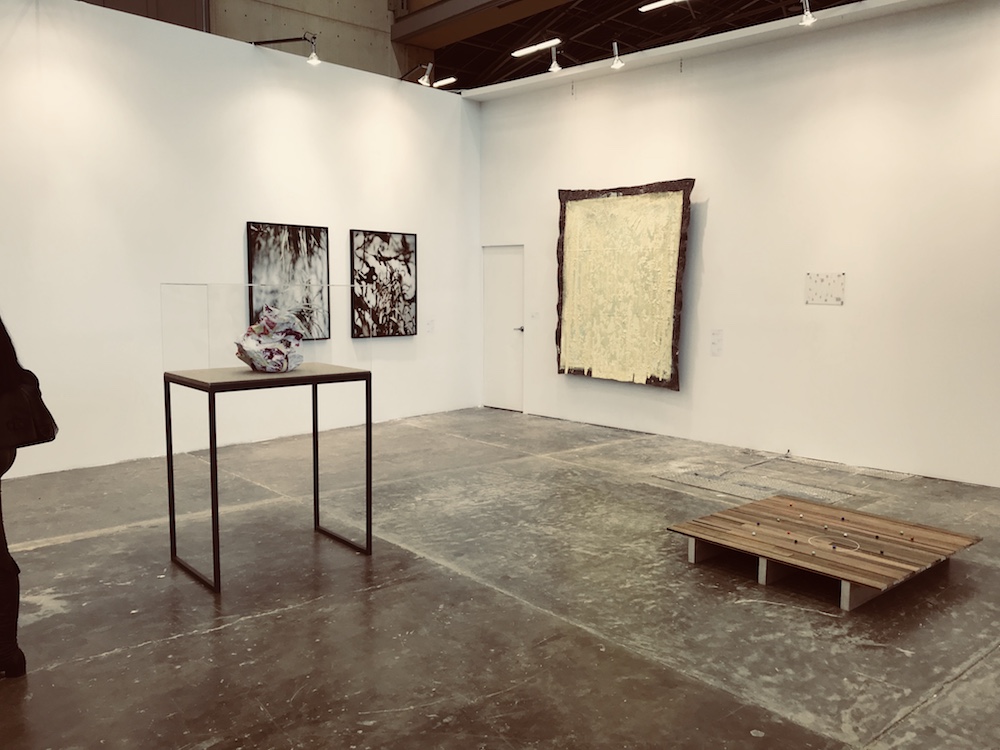
View of Elba Benítez’s booth at ArtBo 2017. Photo by Lorena Muñoz-Alonso.
“I really wanted to make ArtBo a place for discovery,” Gaviria, the daughter of former Colombian president César Gaviria, told artnet News. “In the last two years there’s been a strong interest from blue-chip galleries in participating at the fair, but I want to do this consciously, focusing on content and on emerging art.”
“I think a fair can only position itself if it does something different, and here you don’t get the feeling that it’s like every other fair you’ve visited during the year,” she added.
One thing that ArtBo certainly does differently is back a number of art spaces across town to stage exhibitions year-round. It has also recently launched ArtBo Weekend—a sort of Gallery Weekend for Bogotá that held its first edition last May.
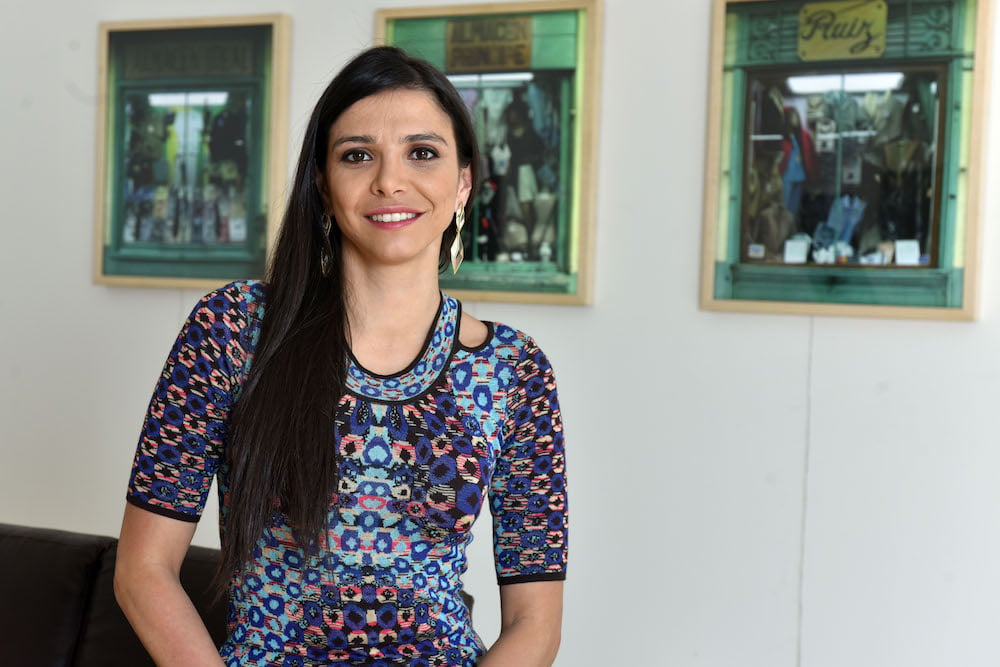
María Paz Gaviria, director of ArtBo. Courtesy of ArtBo.
Smaller than its competitors Zona Maco in Mexico City and São Paulo’s SP Arte (which gathered and 120 and 135 exhibitors in their most recent editions, respectively), ArtBo is also a calmer fair, with lower prices and a slower selling pace that stretches well into the weekend.
Gaviria acknowledges that strong sales aren’t the fair’s main asset. “The fair started as a nonprofit project by the Cámara de Comercio and it hasn’t grown in size over the years, even though it could have,” she said. “This was a conscious decision that has given space for different projects to flourish in the local scene.”
The city is now home to more than 100 commercial galleries, most of them scattered around three areas: San Felipe (a newly gentrified area often referred to as “Bogotá’s art district”), La Macarena, and Quinta Camacho. These include the galleries that are most known at an international level: Casas Riegner, Instituto de Visión, Nueveochenta, Sketch, Espacio El Dorado, Alonso Garcés, and Valenzuela-Klenner.
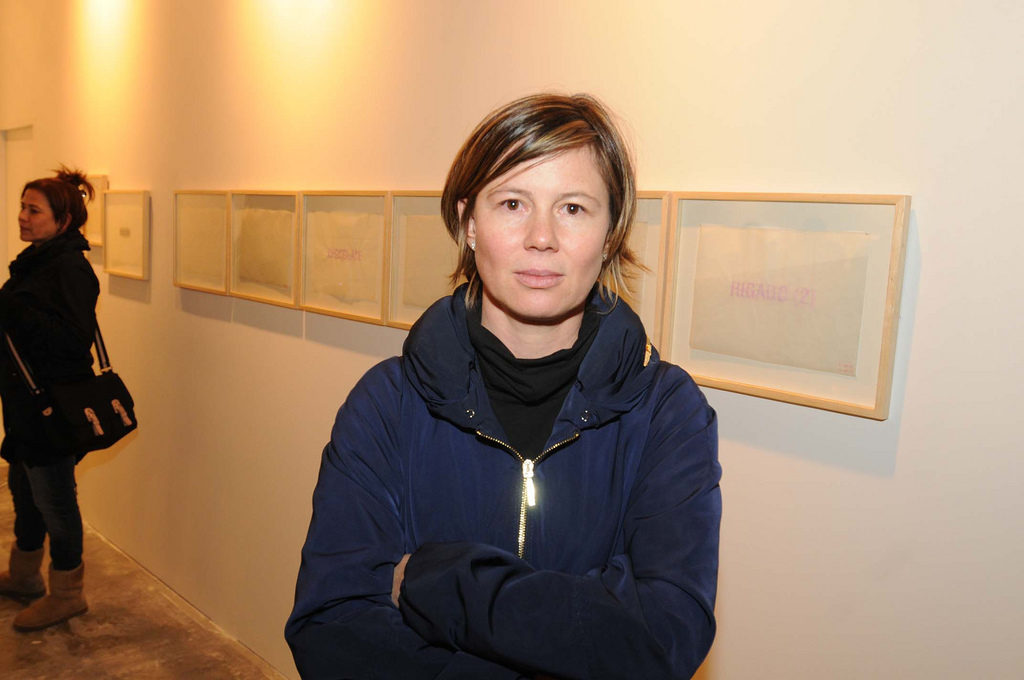
Catalina Casas from Casas Riegner. Courtesy of ArtBo.
“ArtBo has certainly been instrumental in the rising visibility of the Colombian art scene,” Catalina Casas, the founder and director of Casas Riegner, told artnet News during the fair’s preview.
She pointed to a number of key players involved in the operation: María Inés Rodríguez, director of the CAPC Bordeaux; Ana Sokoloff, an art advisor and former vice president of the Christie’s Latin Amerian paintings department in New York; José Roca, artistic director of Bogotá’s FLORA ars+natura and former curator of Latin American art at Tate Modern; Juan Gaitán, director of the Museo Tamayo Arte Contemporáneo in Mexico City; Irene Aristizábal, head of exhibitions at Nottingham Contemporary.
“But our scene has always been very rich,” Casas said. “The difference is that now people are looking at us and, yes, there’s a number of new galleries and new spaces being launched. But when it comes to the work of artists specifically, we have always had a very strong scene.” Casas herself represents national heavy-weights like Beatriz González, Carlos Rojas, Miguel Ángel Rojas, Johanna Calle, and Mateo López.
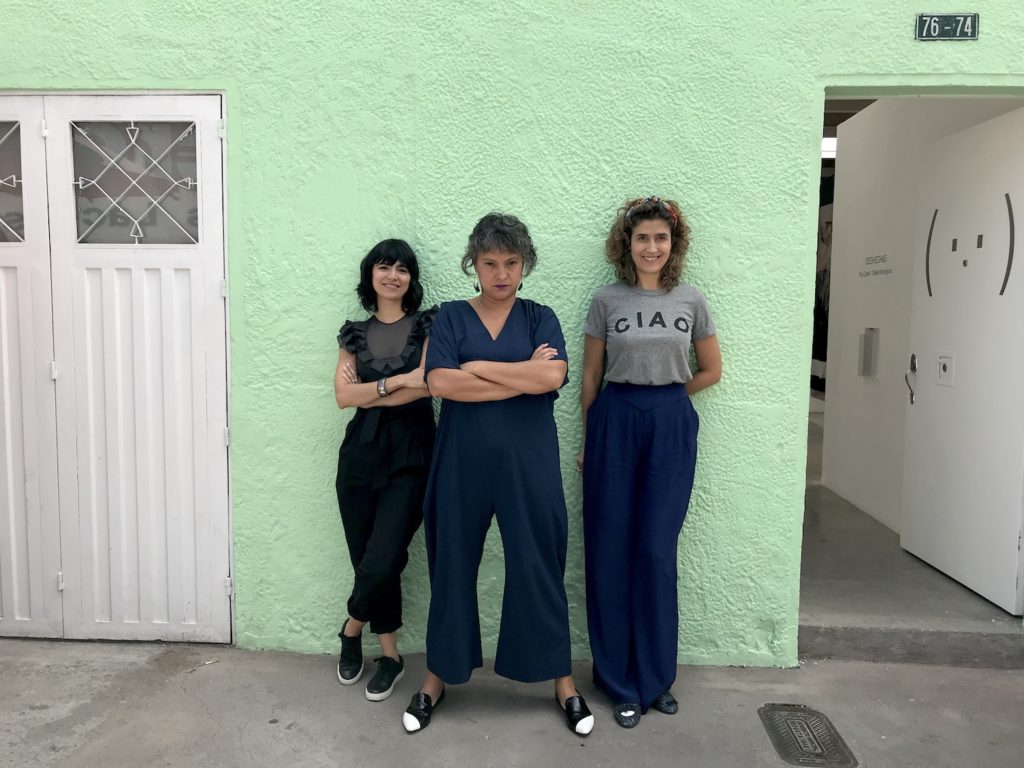
From left to right: Omayra Alvarado, Beatriz López, and María Wills pose in from of their gallery Instituto de Visión in San Felipe, Bogotá. Photo by Lorena Muñoz-Alonso.
Probably the most illustrative example of the growing appeal of the Bogotá art scene is the success of the gallery Instituto de Visión, spearheaded by its four directors: Beatriz López, Karen Abreu, María Wills, and Omayra Alvarado. With an exciting roster that mixes younger artists (like Pia Camil, Marlon de Azambuja, and Felipe Arturo) with historical figures that are being rediscovered (Miguel Ángel Cárdenas, Ofelia Rodríguez, and Alicia Barley), the gallery has been getting a lot of international attention with striking booths at some of the top international fairs, including Art Basel Miami Beach, FIAC, Frieze New York, the Armory Show, and Liste.
San Felipe is also home to the renowned independent art space FLORA ars+natura, launched in 2013 and directed by José Roca, former curator of Latin American art at Tate Modern. Besides a year-round program of exhibitions, FLORA focuses on the production of art through new commissions and international artistic residencies.
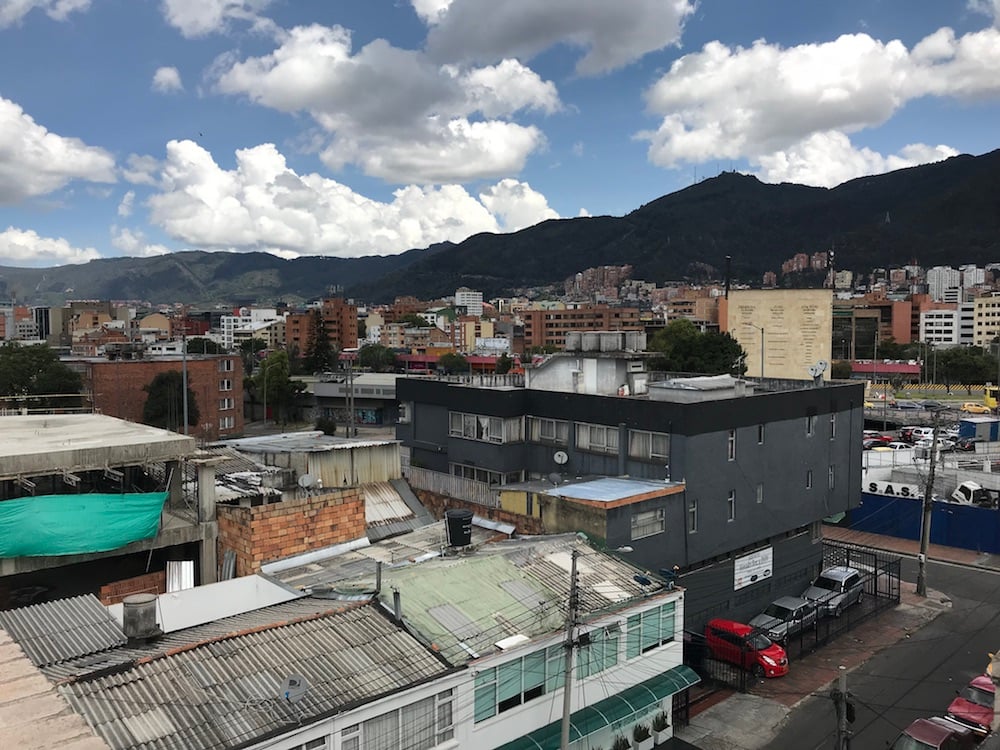
City view from the rooftop of the independent art space FLORA ars+natura in San Felipa, Bogotá’s art district. Photo by Lorena Muñoz-Alonso.
Going south, in the area of La Macarena, we find NC-arte, a key private nonprofit art space in the city. In this former school, now covered in Brutalist concrete, its director and chief curator Claudia Segura is developing an ambitious program of primarily solo exhibitions that combines international stars like Do Ho Suh, Xavier Le Roy, and Rafael Lozano-Hemmer, with younger Latin American artists like Nicolás Paris, Amalia Pica, and Iván Argote.
Located around the corner is the also impressive Espacio El Dorado, which has recently transitioned from a nonprofit to a commercial gallery. At the time this writer visited the space, two of the three exhibitions on view featured the work of two young indigenous female artists from areas outside Bogotá, Julieth Morales and Luz Adriana Vera, both exploring questions of trauma and the female body through striking performances, installations, videos, and photographs.
The city is not exactly lacking in terms of art fairs either. ArtBo now has three satellite fairs running concurrently: Feria Odeón, Barcú, and Feria del Millón. Of these, the absolute must-see is Feria Odeón, which takes place in Espacio Odeón, a stunning Modernist building from 1939 that’s situated right in the heart of the city, near Plaza Bolívar and the famous Museo del Oro.
This year, the edgy boutique fair—launched in 2011 by Tatiana Rais with María Fernanda Currea, Vanessa Adatto, and Juliana Steiner—brings together 18 young galleries from all across Latin America and Spain. Exquisitely arranged in a booth-less take over of the building, it was definitely one of the highlights of the week. The rest of the year Espacio Odeón has a program of exhibitions organized by curator Alejandra Sarria.

Tatiana Rais, founder and director of Espacio Odeón, during the installation of Feria Odeón 2017. Photo by Lorena Muñoz-Alonso.
But it’s unclear how long this growth will last. After several years of a prospering national economy, there are signs that it’s starting to slow down. The complex peace process between the government and FARC, combined with a climate of uncertainty created by next year’s general election, are making some collectors feel uneasy about spending on art.
“Despite the number of new galleries popping up here, the local art market is still very difficult,” Casas told arnet News. “Our gallery program is more commercially successful abroad, which is why we do so many international fairs [including Frieze London and Frieze New York, Art Basel Miami Beach, FIAC, and ARCOmadrid]. The market here in Colombia is still really small.”
“I’m hopeful, though,” she added. “I think the work that ArtBo is doing, in terms of educating and stimulating local collectors, will pay off. And I think our museums are slowly starting to develop their collections too, which is very important. We need the help of institutions too, galleries can’t shoulder all the responsibility.”
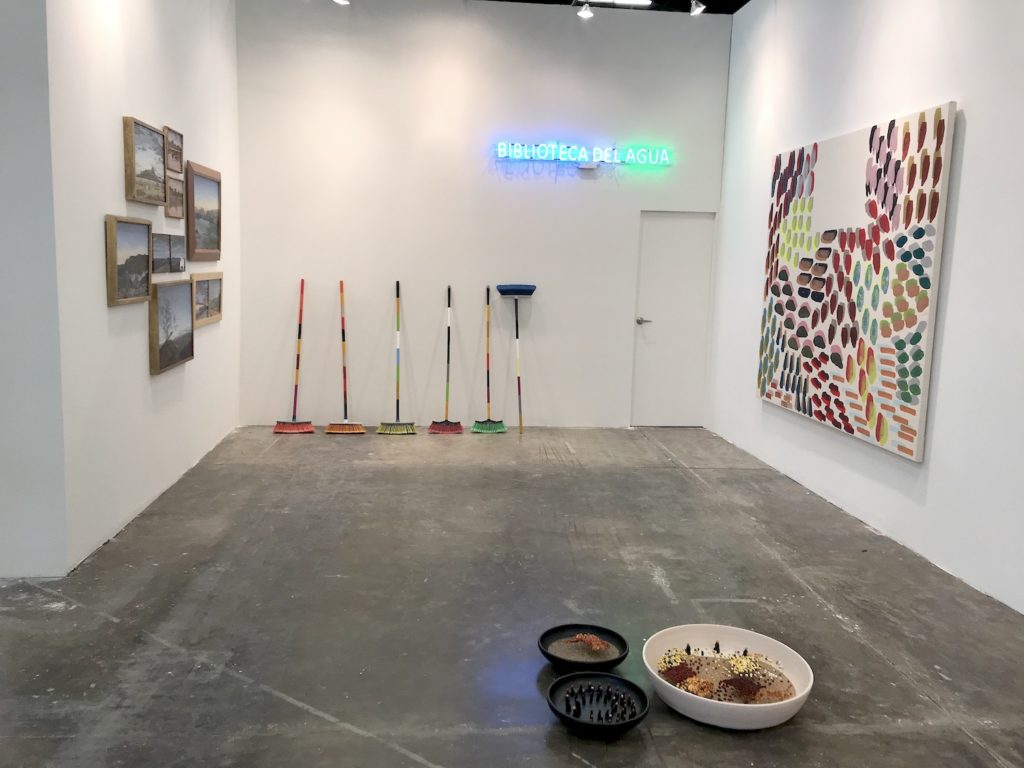
View of Instituto de Visión’s booth at ArtBo 2017. Photo by Lorena Muñoz-Alonso.
Nearby at the main fair, Beatriz López echoed a similar sentiment. “We are going through a very positive moment,” she said. “The hard work of a number independent agents—including artists, curators, gallerists, private foundations and art spaces—has professionalized the artistic scene to a great level, and we have developed new ways to communicate and collaborate with each other.”
“But my complaint is always the same: it can’t all be down to us independent agents. There has to be a public awareness; public institutions have to be developed to enable research, discourse, collecting,” she said. (The city currently counts three public museums of contemporary art: The Museo de la Banca de la República, the stunning Museo Nacional de Universidad Nacional de Colombia, and the Bogotá Museum of Modern Art (MAMBO), and only the first one seems to be buying and building a solid permanent collection at the moment.)
“I feel that unless there’s a degree of public funding to sustain this scene, all the hard work that we have all put into it might be in danger,” López said. “The Cámara de Comercio de Bogotá, through ArtBo and its spaces in the city, is effectively supporting our scene, but our art history can’t be written like this. We need the specialized help of public institutions and museums. A strong art scene needs strong institutions.”
There is an undeniable creative energy in the streets of Bogotá (and this report has barely touched upon the many smaller, artist-run initiatives, like Carne Gallery, now part of LA’s Ruberta, or Miami). Forward-thinking galleries, daring nonprofits, and a base of high-quality artists keen to tackle the complicated history of their country—from the colonization of indigenous tribes and the so-called “Colombian conflict” to current dubious mining practices—make for a vibrant art scene. Let’s hope that the resources necessary to sustain it are developed in time to keep up the momentum.